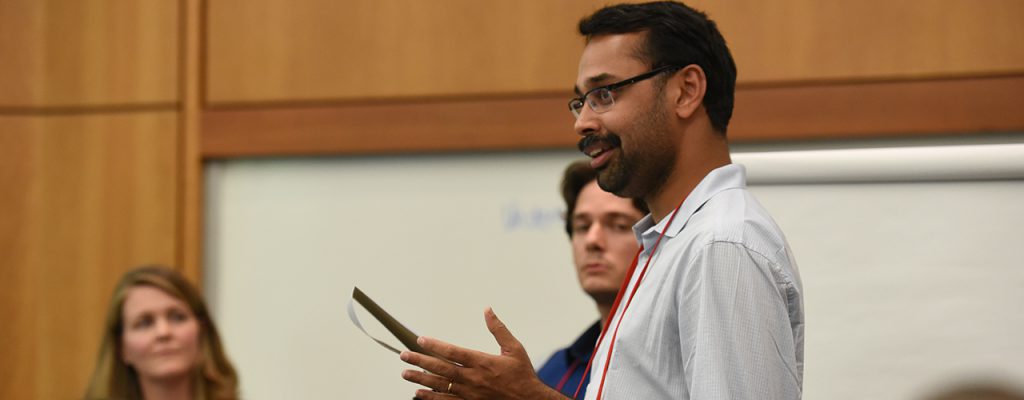By: Cynthia Macdonald
14 Jan, 2019

In 2002, Paremeswaran Ajith came to the study of gravitational waves through what he calls a “series of accidents.” But accidents can be very fortunate indeed: Ajith’s chosen field would soon change the face of astronomy, leading his colleagues to make discoveries that were once thought impossible.
Ajith grew up in the tropical state of Kerala, in southwest India. At one point he dreamed of being a filmmaker, but ultimately earned a master’s degree in science. After his rejection from a summer program in statistical and condensed matter physics, he wasn’t sure where life would take him.
The answer came when one of his professors wrote an introductory letter to Sanjeev Dhurandar, one of only two gravitational wave specialists in all of India. After a highly productive summer working in Dhurandar’s lab, Ajith’s future course was assured. He immediately embarked on a PhD in astrophysics.
Gravitational waves can be described as ripples in the fabric of space time. They’re caused by the fierce acceleration of giant objects due to mergers or collisions in various parts of the universe. Albert Einstein predicted the existence of such waves in 1916 as part of his general theory of relativity, but it would be almost 100 years before astrophysicists could actually see one in action – thanks to the Laser-Interferometer Gravitational Wave Observatory (LIGO), a project currently housed in two U.S.-based locations.
“Gravitational waves represent an entirely new way of looking at the universe,” says Ajith from his office at the International Centre for Theoretical Physics in Bengaluru. “For example, they’ve allowed us to observe binary systems consisting of two black holes. Previously, almost everything we knew about the universe came from observations of electromagnetic waves. But black holes don’t emit any light: you can only study them through gravitational waves. So it’s now possible to see a new population of black holes that we didn’t even know existed.”
In 2007, Ajith made a bet with one of his fellow doctoral students that the famous waves would be detected by 2015. But because LIGO wasn’t even fully operational until that year, it was a bet he prepared to lose. By then he’d assumed his current professorial position, and was visiting Germany to work on a project at the Albert Einstein Institute in Hannover. Two days after he left, however, the first gravitational wave was detected. Ajith won his bet with several months to spare.
LIGO is currently building a new detector in India, set to begin operating by 2025. As one of the founding members of a group that initiated the project, Ajith is understandably excited about this.
In the Global Scholars program, I’m part of a vibrant group who concentrate on different things: not only science, but history, psychology and education. And in Gravity & the Extreme Universe, I meet some of the top minds in my field.
“For people in India, it’s a unique opportunity to be in the forefront of an emerging research frontier,” he says. More than 100,000 Indian citizens with PhDs currently work abroad; 91,000 are in the United States. A project like LIGO could facilitate their ability to stay home, enriching local research and development. “We have a very large young population, and many of them have high aspirations,” Ajith adds.
Ajith adds that new LIGO locations are necessary for technical reasons. A single detector can’t localize where gravitational waves are coming from, so astrophysicists depend on data from widely separated observatories across the globe. With the establishment of LIGO India and another upcoming location in Japan, that will finally be possible.
CIFAR helps to support Ajith’s work in two ways. “In the Global Scholars program, I’m part of a vibrant group who concentrate on different things: not only science, but history, psychology and education. And in Gravity & the Extreme Universe, I meet some of the top minds in my field. The CIFAR meetings are always fun, but very motivating as well. It’s a great organization to be part of.”